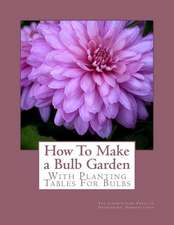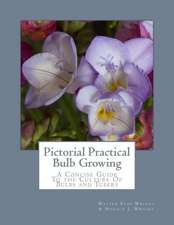"For a floral gesture without the commercial frenzy of Valentine’s Day flowers, consider a new book about cut flowers, Strange Bright Blooms. . . . Malamud has written an unexpectedly rollicking read about our passion for cut flowers. It’s not a chronological history so much as a tussie-mussie of ideas, thoughts, anecdotes, and stories exploring the cut flower in literature, visual art and culture. (The tussie-mussie incidentally became wildly popular during the Victoria era, following the lead of the Queen who loved to give little posies to her friends. Malamud counts her as the ace influencer of her time.)"
"Examining all things floral from paintings, fashion and pressed flowers to decorative church hats and flower power, this generously illustrated book takes cuttings from one aspect of the human urge to tame and curate nature."
"A fascinating and sometimes challenging literary collection of thoughts on the subject of cut blooms and our relationship with them. . . . Malamud's ambitious new work invites us on a journey to discover the allure of cut flowers through prose and art. . . . This is not a glossy, coffee-table book featuring luxuriant and stylishly arranged blooms, but a thought-provoking insight into our love affair with flowers and a global industry at odds with the product it promotes. Above all, readers are encouraged to reflect on their own attitudes towards cut flowers."
"At a whopping 324 pages, comprising ninety stunning color plates and twenty halftones, Strange Bright Blooms: A History of Cut Flowers is the type of deep dive into the complicated history of cut flowers that flower nerds have been waiting for. . . . Strange Bright Blooms focuses on the social ramifications of floriculture throughout history. In five fascinating sections, this book explores everything from the economic history of flower sellers to the role flowers have played in our modern perceptions of gender, sexuality, race, and class. . . . Malamud has created the ultimate compendium of cut flower industry history. . . . A must-read addition to your floral library."
"Flowers grace our lives at moments of celebration and despair. They brighten our homes, our parties, and our rituals. In this examination, Malamud explores our relationship with cut flowers, but also painted flowers, glass flowers, pressed flowers, flowery church hats, weaponized flowers, and much more."
"In Strange Bright Blooms, Malamud writes perceptively about the visual and verbal rendering of flowers. His research is wide-ranging, sending the reader off into all manner of artistic terrains. . . . This is a strange and bright book, alive to floral beauty and revealing for the connections it makes between flowers in art, science, commerce, and culture."
"Strange Bright Blooms will convince you that flowers don't just stand there looking pretty. Malamud makes intriguing arguments that flowers not only attract but directly interact with us. While their beauty has inspired great art, blooms have likewise been repurposed as symbols of sexism and racism. Poisonous in warfare, flowers also have been signs of peaceful revolution. Like an unexpected delivery of flowers, this book is a surprise and a delight."
"Malamud’s new book explores our endless attraction to cut flowers as a ‘shortcut to beauty’ but also as a medium in which to explore all manner of concerns around love and war, class and race, life and death. Who would have thought that Marie Osmond’s paper roses, Jeff Koons’s tulips, Mae Reeves’s hats, T. S. Eliot’s sleeping dahlias, and Banksy’s Flower Bomber (among many, many other wonderful blooms) would combine to make such a fabulous arrangement?"




















